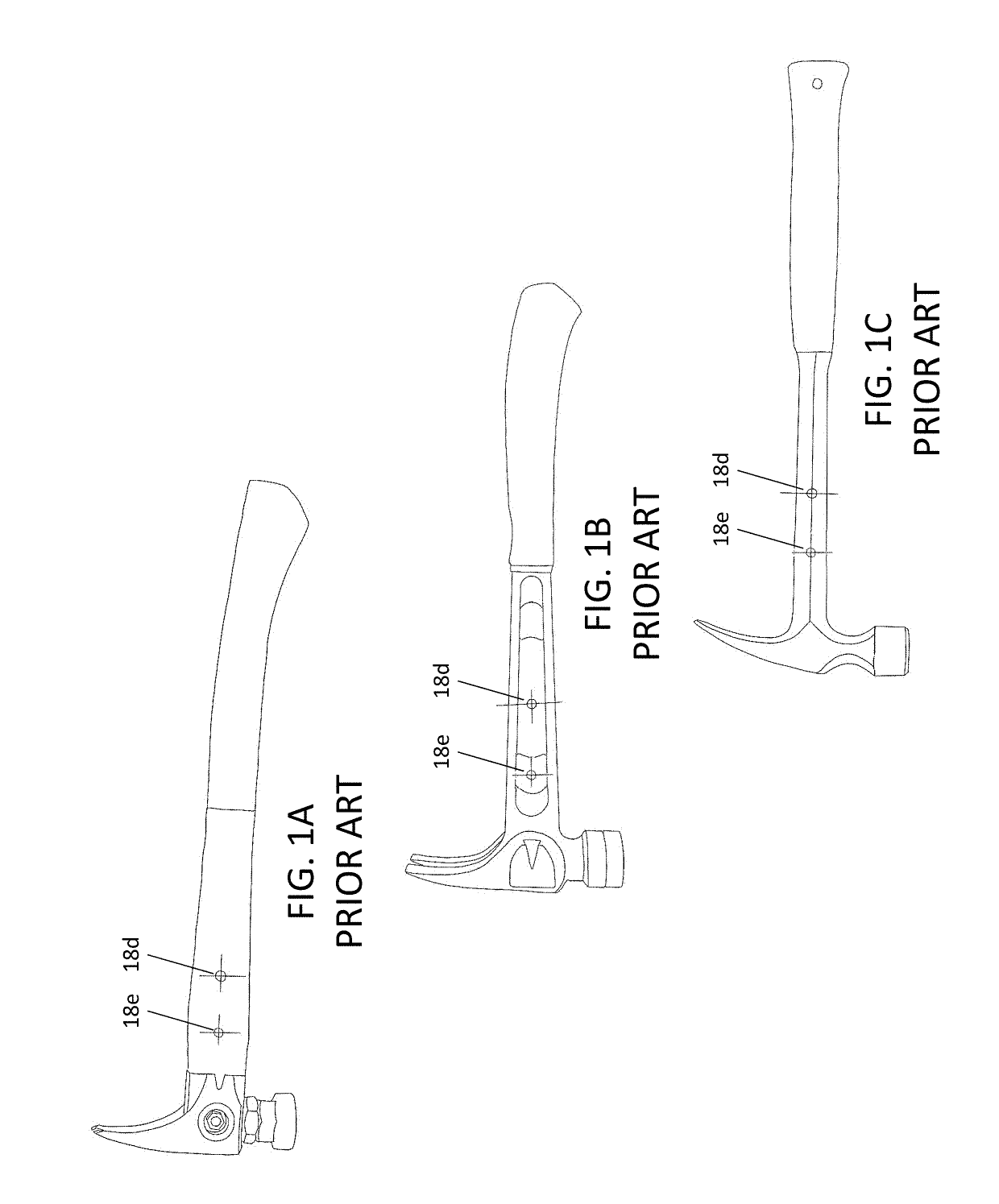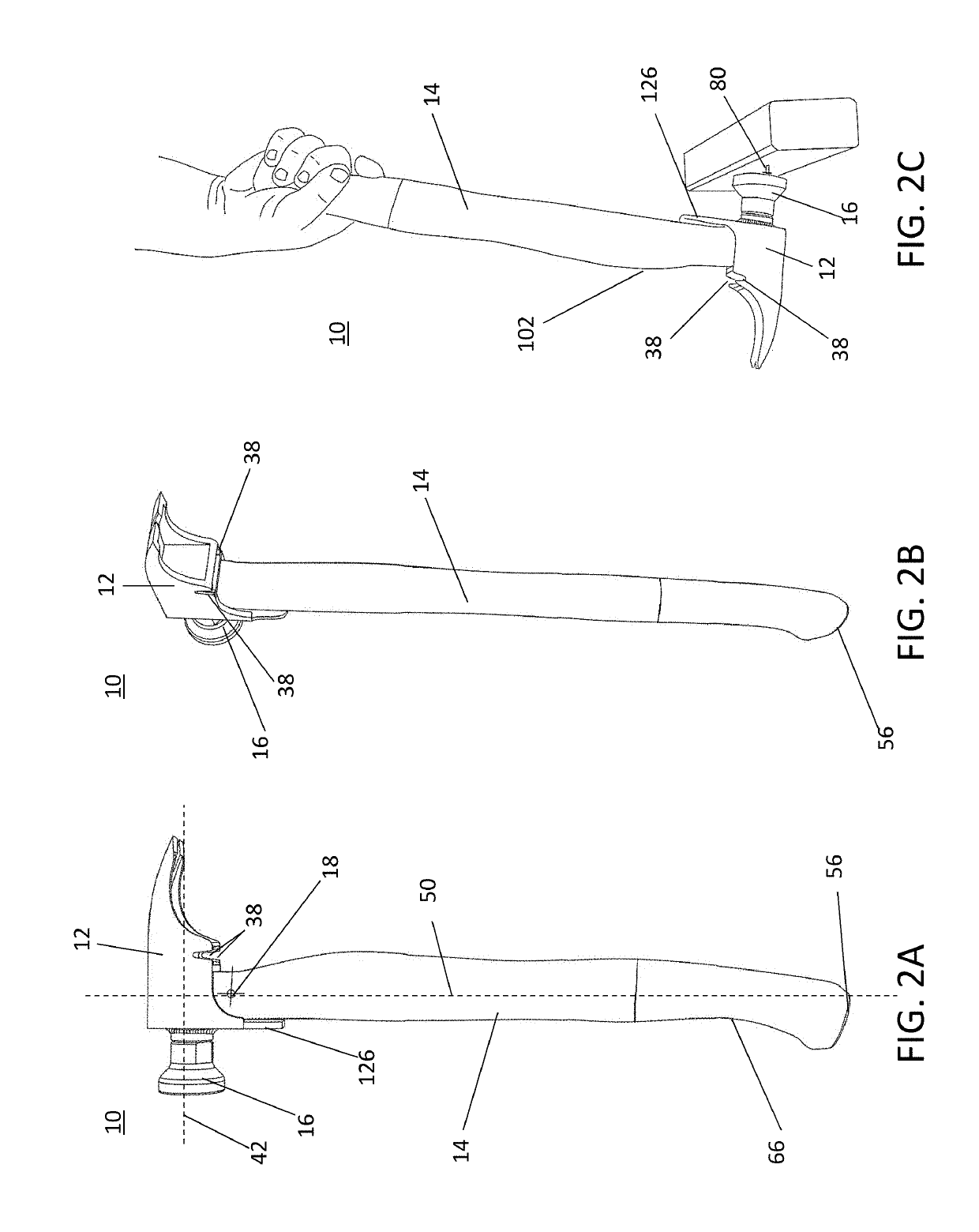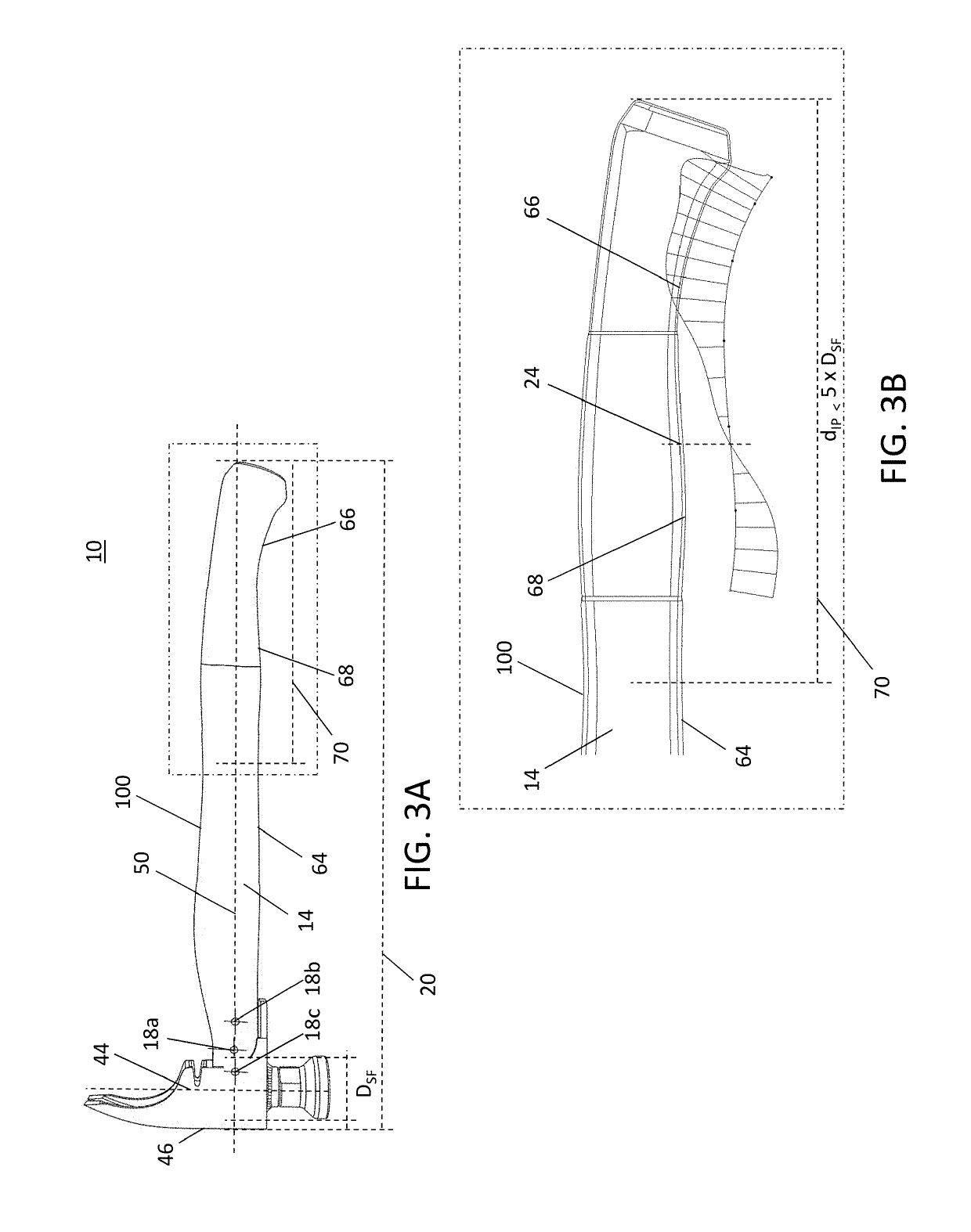Hammer with lightweight handle
a hammer and handle technology, applied in the field of striking tools, can solve the problems that the core itself does not provide any strength or structural support, and achieve the effect of preventing nail slide and high mechanical advantag
- Summary
- Abstract
- Description
- Claims
- Application Information
AI Technical Summary
Benefits of technology
Problems solved by technology
Method used
Image
Examples
Embodiment Construction
[0052]The following description of the preferred embodiment(s) is merely exemplary in nature and is in no way intended to limit the invention, its application, or uses.
[0053]As illustrated in FIGS. 2A-2C, a hammer 10 has a head 12 that is connected to a handle 14. The handle may be grasped and swung by a user to drive a nail 80, stake or similar fastener and is lightweight, preferably being made from a strong and lightweight composite material like polymer reinforced composite fiber, carbon fiber, fiberglass, Kevlar, and aramid weaves. The hammer head 12 has a striking face 16 used for striking the fastener 80, a claw end 86 opposite the striking face and a head length 44 separating the claw and striking face. The handle is attached to the head at a position opposite the end face 48 and extends away from the head's end face 46a to a handle base 56. The head's longitudinal axis 42 extends between the circular striking face and the end of the hammer's claw and is substantially perpend...
PUM
 Login to View More
Login to View More Abstract
Description
Claims
Application Information
 Login to View More
Login to View More - R&D
- Intellectual Property
- Life Sciences
- Materials
- Tech Scout
- Unparalleled Data Quality
- Higher Quality Content
- 60% Fewer Hallucinations
Browse by: Latest US Patents, China's latest patents, Technical Efficacy Thesaurus, Application Domain, Technology Topic, Popular Technical Reports.
© 2025 PatSnap. All rights reserved.Legal|Privacy policy|Modern Slavery Act Transparency Statement|Sitemap|About US| Contact US: help@patsnap.com



